Rift and Quarter Sawn Oak
Plainsawn, Riftsawn, Quartersawn refers to the lumber log cut method. Typically it applies to White or Red Oak. The vast majority of the oak flooring we sell is Rift/Quartersawn (typically abbreviated as R/Q) mix White oak.
It is an excellent choice for radiant heated floors or installing over concrete. Straight grain creates a more defined, formal, and contrasting pattern in Parquet, Herringbone, and Chevron.
The rift and quartered board will only shrink in thickness and remain stable in flooring, millwork, furniture, or cabinetry applications. It is the best option for radiant heated floors and critical applications. In general, it is a superior choice to minimize seasonal gaps, buckling, etc. It has stability rivaling engineered floors and longevity of the solid wood floor - that what makes rift/quartered sawn flooring the best choice for discriminating buyers.
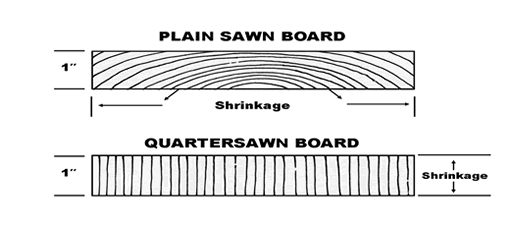
- Quartersawn (Quartered and Rift) White Oak is prized for flooring, millwork, furniture, and cabinetry for its stability and beauty.
- Quartered White Oak exhibits pronounced Medullary Ray or Ray Fleck, which becomes even more pronounced when the wood is finished.
- Rift White Oak exhibits less Medullary Ray or Ray Fleck while maintaining the same straight grain appearance as Quartered.
Quartersawn boards all share a common characteristic - the grain pattern on the face is straight-grained. In the Oaks, when the growth rings are 60-90° to the face of the board, the Medullary Rays are exposed to the maximum visual effect. These rays are present in all trees but most prominent in the Oaks. These rays are called "figure", "flake", "ray fleck", "tiger stripe" or "fleck".
The typical and most economical choice is to purchase mixed - Rift and Quartered (R/Q) sawn boards.
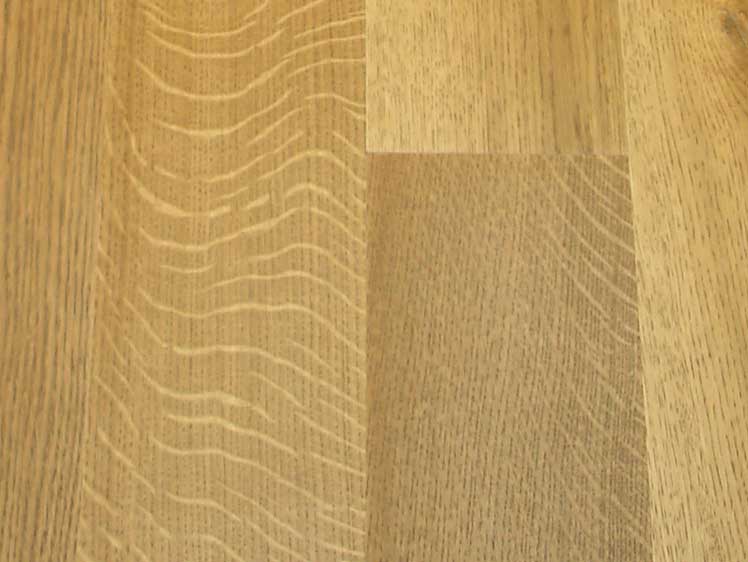
You can also choose Rift Only or Quartered Only boards if looking for a grain's specific appearance. We will hand-select boards with a majority certain grain appearance. Please note that it is impossible to sort out a 100% Rift or Quartered Only board. For example, some Rift boards may still have "flakes" on one end of the board, with the rest of the board being majority Rift cut.
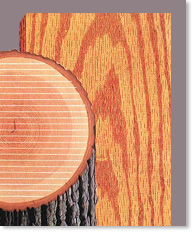 |
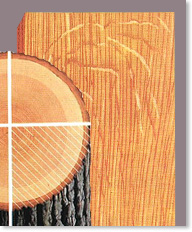 |
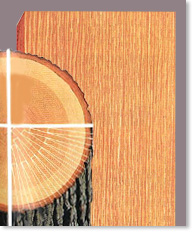 |
| Plain (Flat) sawn wood | Quartersawn wood | Rift sawn wood |
In Quartersawn White and Red Oak, a visual distinction is made between "quartered" and "rift."
Red and White Oak have, as part of their biology, large bands of radial cells called "Medullary
Rays" emanate outward from the center of the log, similar to the spokes of a wheel. These
radial cells transmit water and nutrients outward as the tree grows. While all trees have Medullary
Rays, it is only in the Oaks that these rays are pronounced. The Quartersawing process reveals
to greater and lesser degrees the beautiful appearance of these rays. This appearance quality
is known as "ray fleck," "figure," or "ray."
"Quartered"
The quartered boards are those boards exhibiting the most figure. These boards generally have
growth rings at a 60-90 degree angle to the face of the board.
"Rift"
The rift boards exhibit less figure and are most often those boards with the growth rings at a
30-60 degree angle to the face of the board.
Common Characteristics of "Quartered" and "Rift"
All quarter and rift sawn boards share one characteristic: the growth rings manifest themselves
on the face of the board as straight grain. The principal benefit of quartersawing
technique (sawing of quarter and rift cut lumber) is that all of the grain will be straight, showing none of the "cathedral grain" characteristics of plain sawing. This straight grain also allows for edge gluing for width
while maintaining a consistent appearance across the face of the board.
Quartersawing is a slower process that involves cutting from the inside outwards, turning the quarter log "cant" end for end, and cutting alternate faces. This method is more labor and technologically intensive, yielding slightly narrower boards but with greater strength, stability, and character than plainsawn.